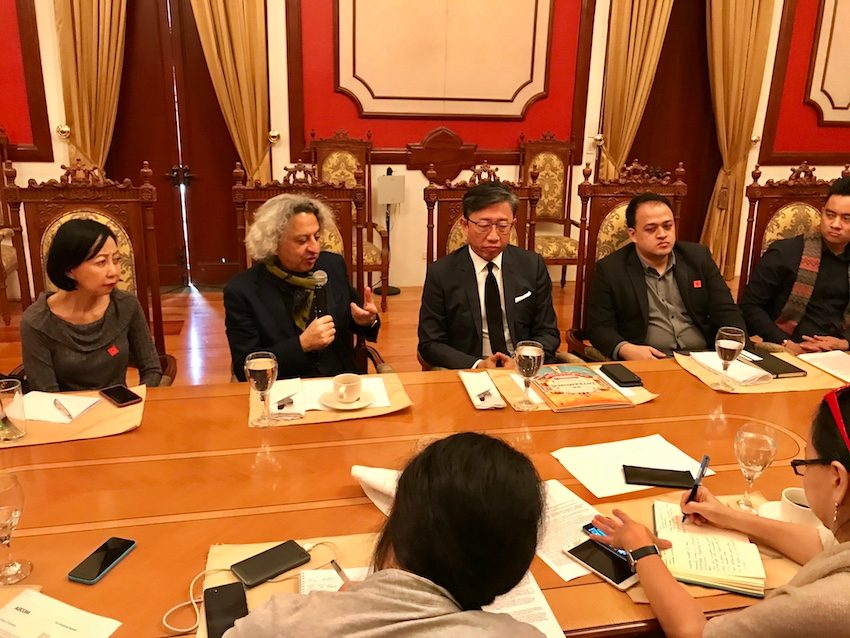SUMMARY
This is AI generated summarization, which may have errors. For context, always refer to the full article.

MANILA, Philippines – Harvard University has deployed graduate students to help fix urban planning in Metro Manila.
For their “Manila: Future Habitations” course, the Harvard University Graduate School of Design (GSD) has sent around 30 students studying architecture and planning to the Philippines’ capital for a “student lab.”
From late January to early February, they visited the following sites for their research:
- Baseco Compound
- Manila Port Area
- Pasig River edges
- Intramuros
According to Harvard GSD dean Mohsen Mostafavi, the course was designed so that the output of the students may be used by the capital’s local government and even the national government.
“Our role in the investigation was not to create a totally alien vision or plan but to simply engage through participation through the creative role of design to see if the concept of development of the city can be transformed and modified,” Mostafavi said in his keynote speech during a forum on the course on Tuesday, February 6.
Harvard Graduate School of Design Dean Mohsen Mostafavi speaking now. He says he looks forward to presenting the students’ findings in September. pic.twitter.com/mni4TyKc6s
— Rambo Talabong (@rambotalabong) February 6, 2018
Mostafavi added they chose the above areas because they have “very different conditions” that require different “alternatives.”
The Manila Port Area, for one, has the problem of rising sea levels, while the Baseco Compound struggles to keep their improvised homes standing. (READ: Harvard design professor asks: Don’t Metro Manila commuters know they deserve better?)
“In a way, Manila is also an extreme condition. You are dealing with conditions of extreme growth, extreme temperature, you have extreme population you have extreme transportation, you have density. This condition of extreme can be bases for a number of investigations that [may result] in very interesting solutions,” Mostafavi added.
This is not the first time that the Harvard GSD has conducted a student lab for a course. They have previously sent students to Kuala Lumpur, Macau, and Xiamen for the same purpose.
The students are set to leave for the United States on February 10 and will present their findings back in the Philippines in September 2018.
Below is a breakdown of their course, from which they will base their projects:
Site One: Manila Bay – Baseco Compound
- Spontaneous Settlements
- Sea Level Rise
- A New Dwelling Typology
- Strategies for Material ReUse and Housing Typologies
Site Two: Port Area
- Redefining and Access to the Waterfront Edge
- Resiliency and Sea Level Rise
- Establishing a New Neighborhood Typology
- Redefining a Middle Income/Worker Housing Opportunity
- Urban Connectivity between Isolated Communities
Site Three: Pasig River Edges and Intramuros
- Re-engaging the River Through Settlement and Sustainability
- Reclaiming the Historic Core
- Establishing a New City Center
– Rappler.com
Add a comment
How does this make you feel?
There are no comments yet. Add your comment to start the conversation.